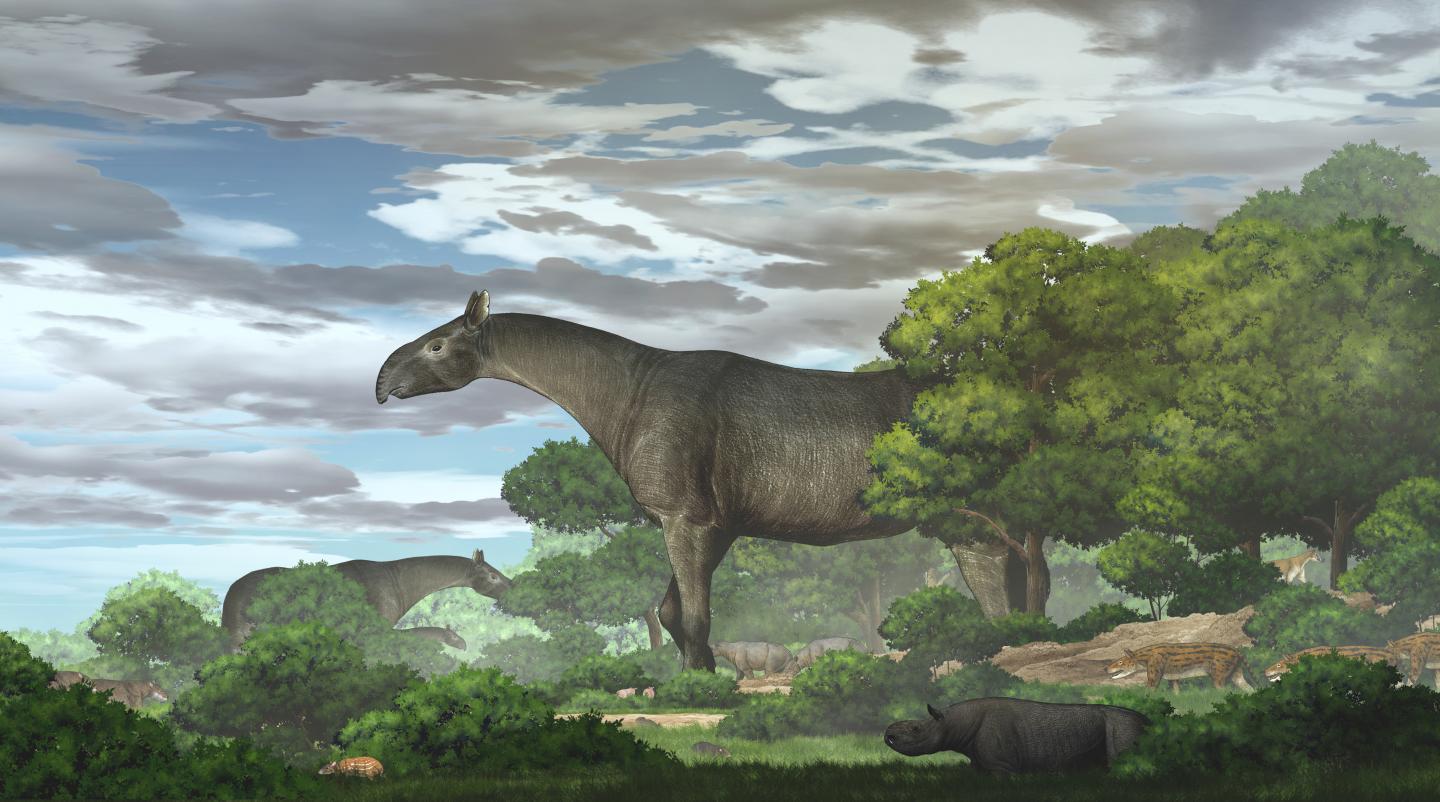The Independent's journalism is supported by our readers. When you purchase through links on our site, we may earn commission.
Scientists discover new species of giant rhino ‘taller than giraffe’
Prehistoric rhino weighed 21 tonnes – the equivalent of four large African elephants – and could reach close to 7m to graze treetops

In north-western China, scientists have discovered fossil evidence of a new species of giant rhinoceros, “taller than a giraffe” that lived 26.5 million years ago, making it one of the largest mammals to have ever roamed the planet.
According to the study, published in the journal Communications Biology, the rhino Paraceratherium linxiaense weighed 21 tonnes – the equivalent of four large African elephants – and could reach close to 7m to graze treetop leaves.
The scientists, including those from the Chinese Academy of Sciences, say the findings offer important clues about the distribution of this long extinct mammal across the Asian continent, shedding more light on the evolutionary lineage of modern-day rhinos.
In the research, the scientists analysed completely preserved skull and jawbone fossils recovered from the Linxia Basin in Gansu Province, China, among deposits pertaining to the Late Oligocene period 34 to 23 million years ago.
They also found associated fossilised body parts of the rhino, including the atlas bone that connects the skull to the spine, as well as three vertebrae from another individual in the site at the northeastern border of the Tibetan Plateau.
Based on the analysis, the researchers found that the fossil remains belonged to an entirely new species different from other known giant rhinos.
Deeper assessment of the atlas bone and the axis bone, the second vertabra going down from the top of the spine, revealed clues that the rhino possessed a long and flexible neck.
The scientists also found evidence from genetic analysis of the samples that Paraceratherium linxiaense was related to another giant rhino species from western Pakistan, indicating that the genus was widespread across Asia, including in the Indian subcontinent.
During this prehistoric time period, the researchers believe the giant rhino could “disperse freely” from the Mongolian Plateau to South Asia along the eastern coast of the Tethys Ocean – a prehistoric sea that has now become incorporated into mountain ranges that stretch from northern Turkey through northern Iran, Afghanistan, Tibet and Indochina due to tectonic plate movement.
“The Tibetan region likely hosted some areas with low elevation, possibly under 2,000m during Oligocene, and the lineage of giant rhinos could have dispersed freely along the eastern coast of the Tethys Ocean and perhaps through some lowlands of this region,” the scientists wrote in the study.
Join our commenting forum
Join thought-provoking conversations, follow other Independent readers and see their replies
Comments